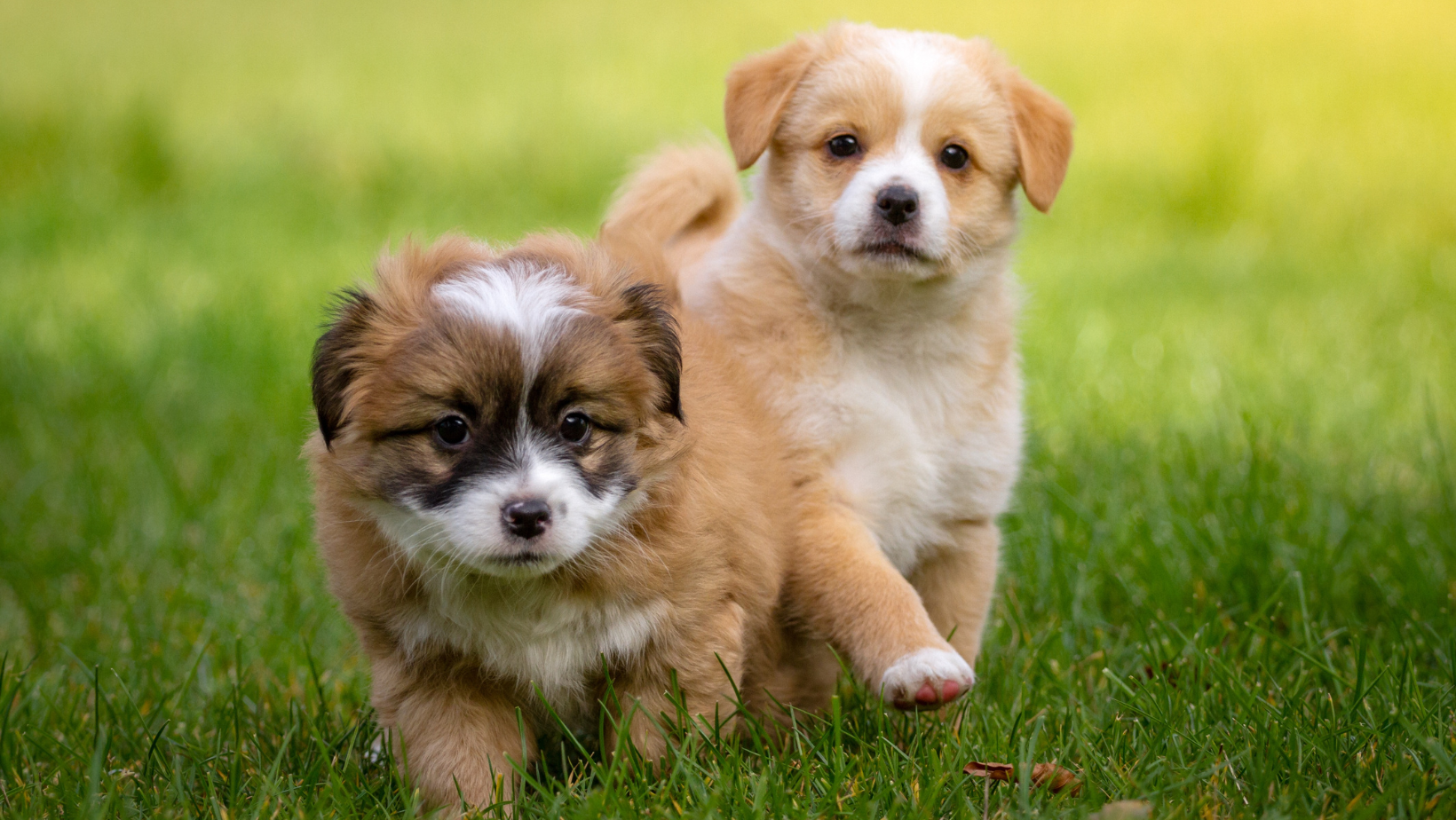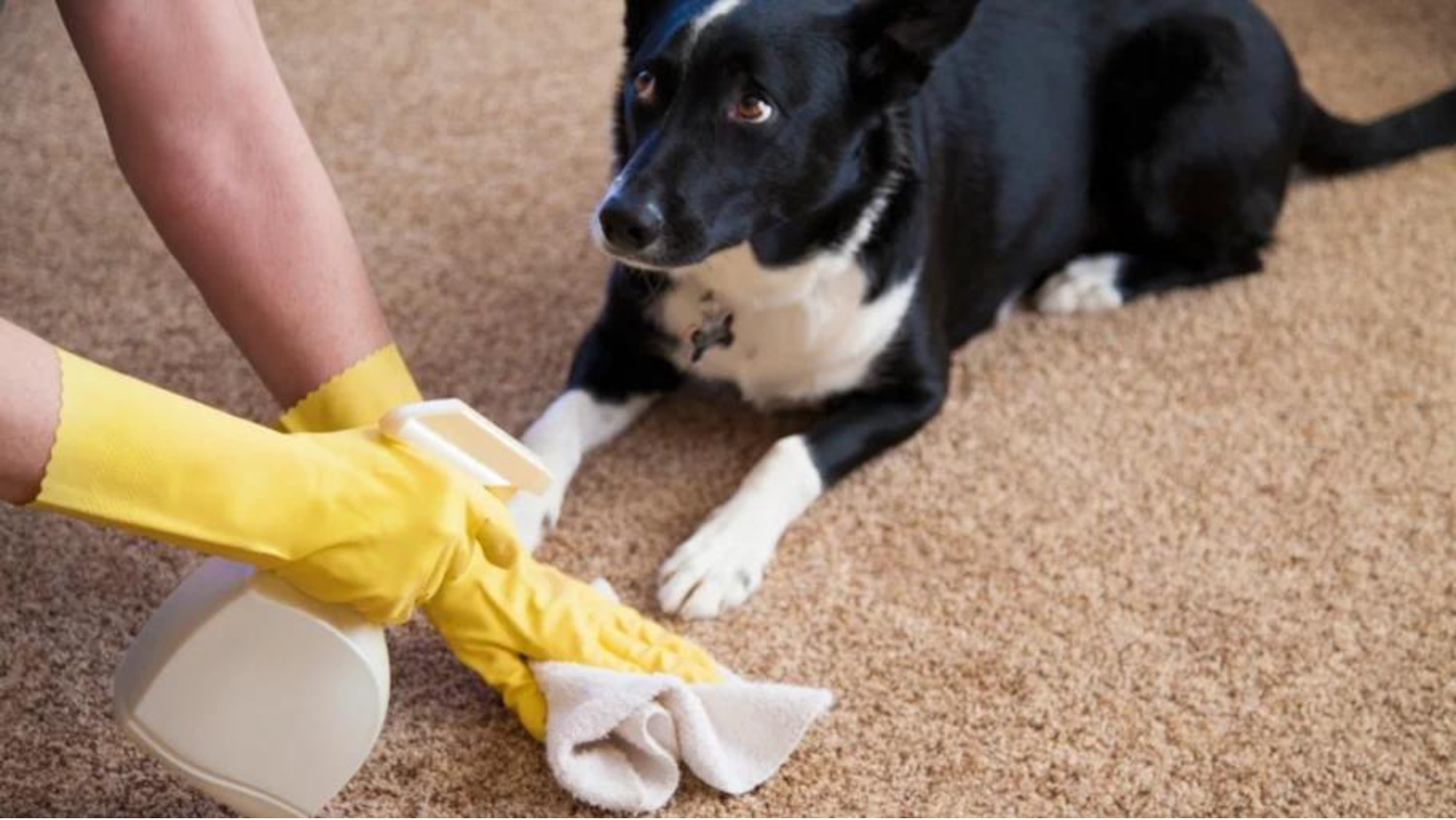Recalls- Dog Training
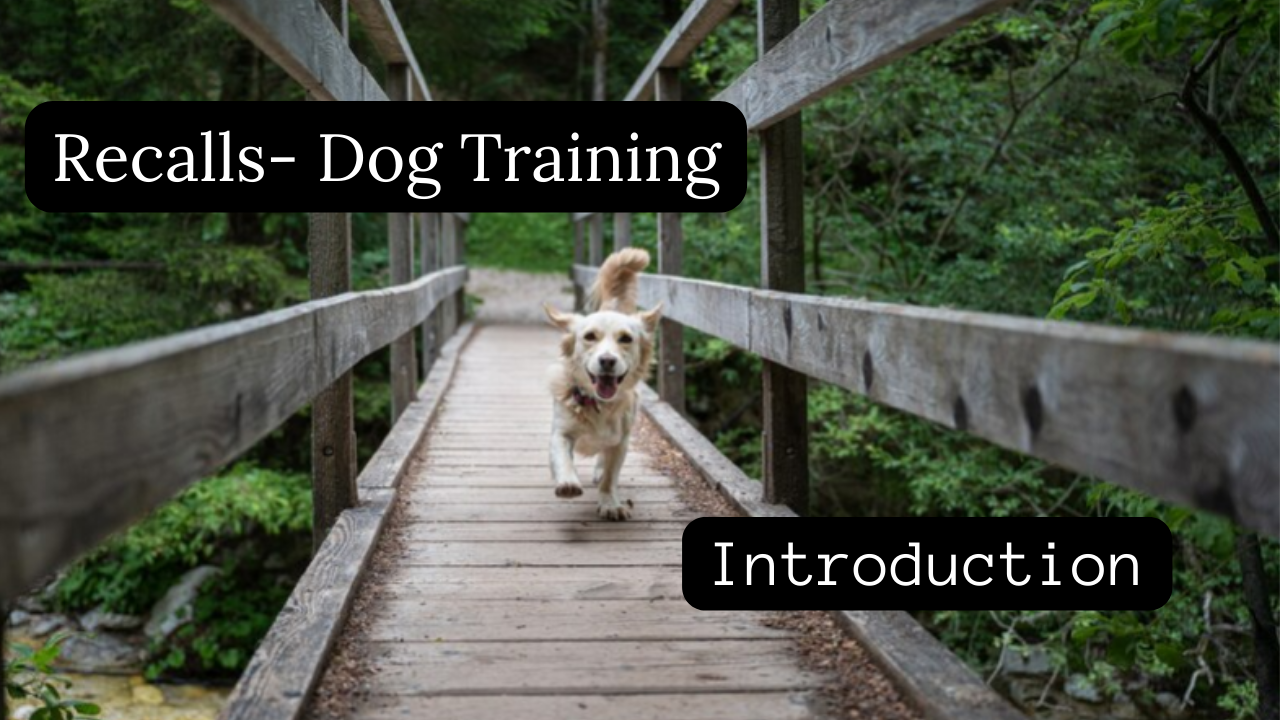
When it’s time to teach recalls in my level-one puppy classes, I get everyone’s attention and say: “Now I’m going to tell you three fantastic ways of teaching your pup…” — insert pregnant pause — “…never to come to you.” Of course, everyone laughs and looks puzzled. But without meaning to, new owners screw up recalls for their dogs all the time. The most common mistake is to call your dog to come to you to do something that your dog doesn’t like — clipping their nails, giving them a bath, putting them in their crate, taking a favorite toy away, and so on. Do this and your dog will figure out in no time that coming to you is no fun for her. Of course, we all need to do things to our dogs that they may not like. When those times come, don’t call your dog; go and get your dog. The most common objection to this recommendation usually comes from young puppy owners, who complain that their pup runs off when they try to get them. If this happens to you, I suggest keeping your puppy on a leash in the house until you no longer have this issue. This simple solution is incredibly effective, and it has enormous additional positive impacts on your relationship with your dog. Not only does it keep your dog from getting into trouble, but it teaches her
early on that she must primarily orient to you rather than to her own impulses when deciding what to do. Imprinting this early in your relationship is one of the most positive things you can do to help build a deep relationship. The second way of screwing up recalls for your dog is calling her in order to reprimand her “over here” for something she did “over there.” Again, your
dog is not stupid. If you call and she comes and gets yelled at — then she won’t do that again. The third fantastic way to make sure that your dog won’t come when called is to repeat the word “come” over and over and over despite the fact that she isn’t responding. Keep repeating words to which you’re trying to attach meaning — like “sit,” “down,” and “come” — and your dog will quickly throw those words in with all the rest of the irrelevant noise she hears coming out of your mouth all day long.
People do this all the time. So DON’T DO THIS!
INTRODUCTORY RECALLS
As with every new exercise, when introducing recalls, start with simple baby steps. Most of all, in the beginning, make coming to you an awesome experience for your dog. As she comes toward you, go wild with enthusiasm and give her killer treats she can’t resist. In addition, reinforce the command watch, and in the middle of all the fun, briefly grab her collar, so she gets used to this as a natural gesture. What shouldn’t you do when introducing and practicing recalls? Don’t run your dog through a series of sits, downs, stands, or other drills after she arrives. Just ask her to sit and to watch, and then let her go right back to what she was doing. Of course, this can and will change down the road (such as when later exercises bulletproof recalls), but
not yet.
 At a random moment, when your dog is
At a random moment, when your dog is
simply wandering, get her attention with a
treat; say her name and “come.” Stick the
treat right on her nose to get her attention;
be obvious and make it easy to succeed.
Once you’ve got her attention, back up and
have her come to you.
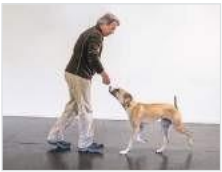
While your dog is coming to you, be sure to
voice lots of enthusiastic praise (but don’t
repeat the word “come”).
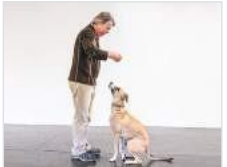
Once she’s in front of you, bring the treat
over her head and say, “Sit.”
Use Killer Treats
When introducing recalls, use the most delicious treats possible. Don’t be afraid to use grilled chicken, roast beef, steak, cheese, or whatever your dog finds irresistible (that is, if regular high-value dog treats such as freeze-dried liver don’t do the trick). Why? Because you want to set your dog up to succeed by making it impossible for her to fail. Stick these treats right on your dog’s nose in order to get her attention and bring her to you. If she’s not interested in your treat, get a better treat. If that still doesn’t do the trick,
don’t feed her breakfast and then try it. Hungry dogs always work better. DO NOT try to make the exercise difficult by adding distance and distractions, at least not yet. Make recalls very easy at first. Reliable recalls take a relatively long time and multiple levels of training to develop (which we’ll cover in the pages ahead). Do not be in a hurry! At this point you want to do everything you can to teach your dog that recalls are a massive plus for them with zero downside. Remember, you won’t always have to shower your dog with treats, but in the beginning, it’s the best way to quickly generate your dog’s enthusiasm and understanding of
this extremely important behavior.
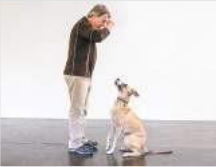 Once she sits, bring the treat up to your
Once she sits, bring the treat up to your
forehead and say, “Watch.”
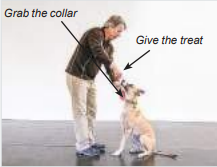
Once she’s looked at the treat on your
forehead, give it to her while simultaneously
grabbing her collar (see sidebar below).
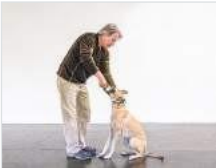
Once she’s taken the treat, release the
collar, tell her, “Go play,” and let her go.



